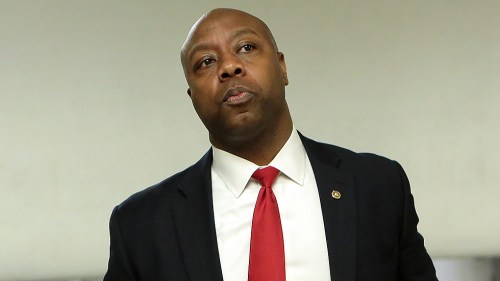6 state legislatures where partisan balance is on the line in November
Greater attention is turning toward state legislatures as they become the focal point for debates over abortion access, immigration, redistricting and gun control.
Democrats and Republicans alike see opportunities to shift the balance of partisan control in one or both chambers among a handful of state legislatures this fall.
Wisconsin, in particular, will be closely watched after Democrats won a lawsuit last year that prompted the state to draw new legislative maps that will go into effect this fall.
Here are six state legislatures where partisan control is up for grabs.
Michigan
Democrats are playing defense in the Great Lakes State’s state House, where the party holds 56 seats while Republicans hold 54.
The state House was briefly tied 54-54 earlier this year when two Democrats resigned from their posts. But the seats, which leaned in favor of the party, were both won by Democrats during the April special election.
There are seven House districts that are open this November: the 33rd, 34th, 35th, 40th, 64th, 81st and 93rd.
The state is also particularly important, as it’s one of a handful of battleground states that will determine the presidency.
A polling average of Michigan surveys compiled by The Hill and Decision Desk HQ (DDHQ) shows former President Trump at 48 percent support while President Biden sits roughly a 47 percent.
Minnesota
Republicans are looking to go on offense in Minnesota, where Democrats hold 70 state House seats while Republicans hold 64.
But Republicans may also get an earlier-than-expected pickup opportunity in the Senate, where Democrats have a 34-33 advantage. State Sen. Kelly Morrison is running for outgoing Rep. Dean Phillips’s seat in the 3rd Congressional District.
If Morrison prevails in the Aug. 13 Democratic primary and wins the general election, that would trigger a special election for her spot in the upper chamber, giving Republicans an opportunity to flip her seat earlier than the scheduled 2026 election.
On the national scale, Biden is barely leading Trump in head-to-head polling, where a polling average of Minnesota surveys compiled by The Hill and DDHQ shows Biden at 46 percent support and Trump at 45 percent.
Pennsylvania
Democrats are looking to flip the Pennsylvania state Senate, which has a 28-22 Republican edge, while protecting a narrow 102-100 majority in the state House.
In the last year alone, the state House majority has been up for grabs three separate times. Democrat Heather Boyd won a special election in Delaware County last May in the state’s 163rd House District, keeping the seat in Democratic hands. Democrat Lindsay Powell won the special election in September in the state’s 21st District in Allegheny County, replacing a former Democratic lawmaker.
Democrats also saved another seat from flipping in February, when Democrat Jim Prokopiak won a special election for the state’s 140th District in Bucks County.
Arizona
Republicans are looking to defend their narrow majorities in both chambers of the state Legislature. Republicans hold a 16-14 edge in the state Senate while holding a 31-29 edge in the state House.
The state became ground zero in the battle over abortion access when the Arizona Supreme Court earlier this year upheld an 1864 abortion law that bans nearly all abortions.
Lawmakers repealed that abortion law earlier this month after multiple Republicans crossed party lines. At least two of those lawmakers also face tight races this year, including state Sen. Shawnna Bolick (R) and state Rep. Matt Gress (R).
The state is back to a 15-week restriction on the procedure.
Democrats are also looking to get a ballot initiative passed that would enshrine abortion rights into the state constitution, while Republicans are pushing for an initiative that would make it harder to pass ballot measures in the state.
Democrats in the Grand Canyon State also have reason to be on edge: The polling average of Arizona surveys compiled by The Hill and DDHQ shows Trump at 48 percent support and Biden at 44 percent. With Kennedy factored in, Trump leads Biden 42 percent to 38 percent.
New Hampshire
Democrats are looking to make inroads in the Granite State, where Republicans enjoy a 14-10 majority in the state Senate and a 201-194 edge in the state House. There are two vacancies and three independents.
Democrats won two special elections in March for state House seats, albeit in favorable Democratic territory, while Republicans won two special elections in January in Coos County.
A competitive governor’s race will encourage turnout after Gov. Chris Sununu (R) said he would not be seeking another term in office.
Polling has also shown a tighter match-up between Biden and Trump in the state, with a polling average of New Hampshire surveys from The Hill and DDHQ showing the president leading Trump 51 percent support to 47 percent.
Wisconsin
Republicans enjoy majorities in both state chambers, with a 64-35 edge in the Assembly and a 22-10 majority in the state Senate.
But Democrats could have a closer shot at flipping the Assembly this fall after Democrats won a lawsuit late last year that prompted new state election maps; experts say Democrats are not expected to flip the state Senate.
Wisconsin will be another critical state for Trump and Biden in November: A polling average of Wisconsin surveys compiled by The Hill and DDHQ shows Trump and Biden nearly tied, with Trump close to 48 percent support while Biden is at 47 percent. When Kennedy is factored in, Trump and Biden are tied at 41 percent.
Copyright 2023 Nexstar Media Inc. All rights reserved. This material may not be published, broadcast, rewritten, or redistributed. Regular the hill posts












